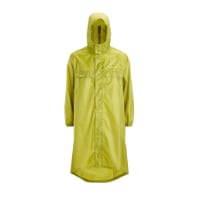Northern Laurie
Active Member
- Time of past OR future Camino
- Northern Way (2017)
Does anyone have any experience with the East Coast Trail?
It looks amazing, and the website I found alludes to lots of villages along the way. It suggests that a hiker carrying a backpack could go village to village across 300km of extraordinary Canadian Coastline, without carrying a tent.
It wouldn't have the Camino family - but I think there might be a few churches along the way. And communing with birds, whales and icebergs sounds awfully nice.
If anyone know the Trail, could you let me know what your experience was, and if it is possible to do a tent-free through hike?
It looks amazing, and the website I found alludes to lots of villages along the way. It suggests that a hiker carrying a backpack could go village to village across 300km of extraordinary Canadian Coastline, without carrying a tent.
It wouldn't have the Camino family - but I think there might be a few churches along the way. And communing with birds, whales and icebergs sounds awfully nice.
If anyone know the Trail, could you let me know what your experience was, and if it is possible to do a tent-free through hike?















